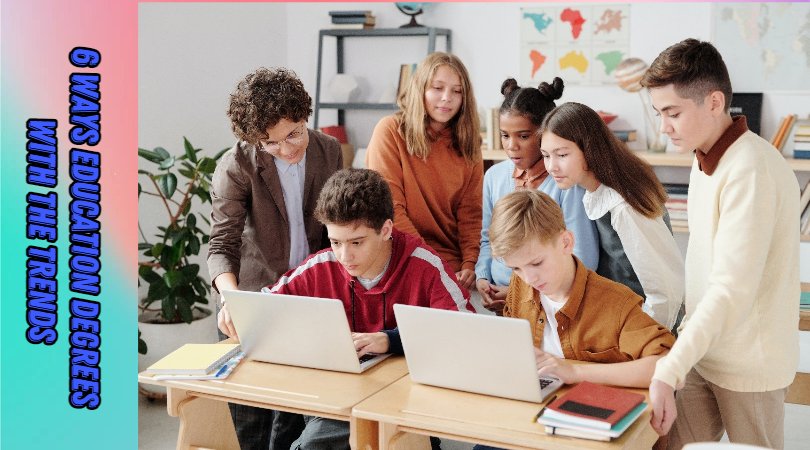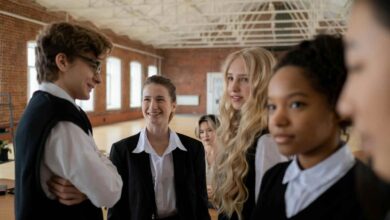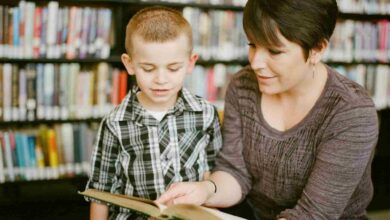Education Degrees- The world is changing at an increasingly rapid speed. To ensure that future generations are better equipped to live and thrive in this fast-paced world, the field of education also needs to change. This modern era has brought with it a lot of challenges for teachers and students alike, which has highlighted the need for a new approach to education.
Classrooms have evolved a great deal over the years. In just the past few decades, the classroom size has been getting smaller and smaller to enable teachers to provide better attention to their students. The mode of teaching has gone from writing on blackboards to PowerPoint presentations and online classes.
Today, the very idea of a classroom has changed through the introduction of online education and websites like Zoom. These changes bring many opportunities to refine existing teaching techniques and introduce new creative teaching methods that can redefine the industry.
A lot of research is being conducted to develop effective teaching strategies that improve students’ performance in tests and exams and enable them to learn more effectively and retain it. These strategies are then taught to aspiring educators enrolled in different education degree programs.
At the forefront are masters in education online programs that enable teachers to further their education by learning new techniques from anywhere in the world.
Table of Contents
Here are a few changes being incorporated into such education degrees to help them keep up with ever-changing trends:
Incorporation of Technology:
Recent technological advancements are the perfect tool to be utilized in improving the education system. Educators can use technology to enhance their lectures and personalize learning by tailoring it to individual students.
However, the sector to benefit most from technology would be special education, as tools like virtual reality and artificial intelligence are predicted to be at the forefront of advances in special education.
Artificial intelligence is valuable for the early diagnosis of learning disabilities, whereas virtual reality is useful in allowing children with autism to practice navigating real-world problems.
Co-teaching:
Having two teachers in a single classroom is known as team teaching or co-teaching. This way of teaching has the benefit of providing a model of teamwork for students. The teachers will be able to give more individual attention to students, enabling them to delve deeper into subjects and learn much more than the traditional method of listening to a lecture.
They will have the opportunity to see concepts from two different perspectives, increasing their chances of understanding said concepts better. However, if the teachers have conflicting personalities and different opinions on teaching, it can become hard for them to work together. Moreover, the students preferring one teacher over another can also threaten the stability of the classroom.
Same Classrooms for Standard and Special Education:
The Individuals with Disability Education Act (IDEA) requires that students of special education be taught in general education classes. Even though this law was passed decades ago, it has not been implemented as thoroughly as the lawmakers had hoped. Today, more and more institutions are trying to adopt this standard as it has a lot of advantages.
Primarily, this will greatly improve working conditions for special education teachers, who often feel isolated from their counterparts in general education. With special education incorporated into general education and the general curriculum adapted for students with disabilities, there is an opportunity to employ co-teaching. Together, a general education teacher and a special education teacher can teach a class, giving them the chance to learn about the other’s field.
Mixed-Age Teaching:
Even though research is still being conducted to produce more conclusive evidence of the benefits of putting kids of different ages in a single classroom, many schools have been employing this methodology for years.
In such a classroom, younger students learn how to interact with their older peers and vice versa. Collaboration between the different age groups encourages teamwork. Younger students learn at a more advanced level, which gives them confidence.
Most importantly, teachers can track their students’ progress for more than a year, giving them a clearer idea of their academic growth.
Encouragement of Critical Thinking:
Education is slowly moving away from rote learning of fundamental facts. Thanks to smartphones and the internet, most knowledge is now available to students at their fingertips.
Research on critical thinking enables educators to develop new ways of teaching, including developing problem-solving skills by working in groups. There is more focus on teaching students how to apply this knowledge in different situations, which will benefit them much more.
Students are encouraged to ask questions and share their findings with their peers, giving them a more active role in their education.
Less Focus on Diagnosis, More Focus on a Child’s Individual Needs:
Children in special education tend to be grouped together according to the learning disabilities they have. This might be counter-productive, as no two children are the same, and one diagnosis can entail many different capabilities and needs.
This is why the focus needs to be shifted from the student’s diagnosis to their actual competence and ability. Degree curriculums should teach teachers how to assess their students before placing them in a classroom that is best suited to their needs.
Conclusion:
The education requirements of today’s students are really different from those in the past, and education degrees are rapidly evolving to train teachers to deal with these changes.
The advancement in technology means that teachers must now incorporate it into their teaching methodology and make good use of all the benefits it offers. Co-teaching can enable two teachers to lean on each other to provide more individual attention to their students while students can see new concepts from two different perspectives.
Focus is to be shifted from a child’s diagnosis to their individual capabilities when assigning them to a classroom. Special and standard education is to be merged so both fields can enrich each other. Mixed-aged teaching will enable educators to stay with their students for more than a year to guide them properly.
Even with education degrees teaching educators all these new practices, it will take many years before any impact of the changes is seen on the education system.
Visit for More Best Articles





